I have chosen my own list of the 10 Strangest and most Amazing Building in the world.
Let's Start With Number 10.....
Let's Start With Number 10.....
10. Universum Science Center in Bremen, Germany
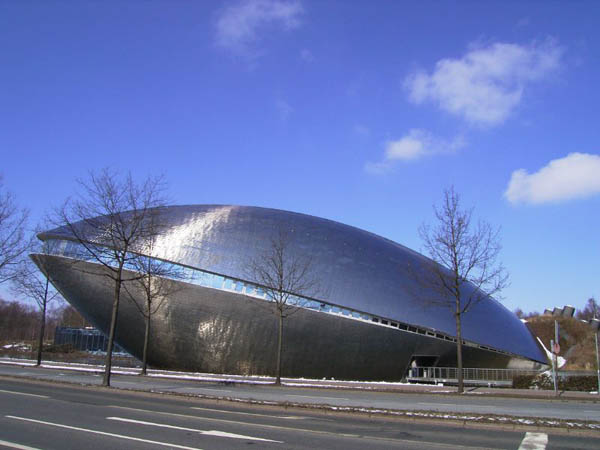
(Image credits: Bogdan Morar)
The Universum Bremen opened in September 2000 near to the University of Bremen, Germany. Covering over 4,000 m² the exhibition contains exhibits related to one of the three topics: mankind, earth and the cosmos. The science center building, with its 40,000 stainless steel scales, resembles a mixture between a whale and mussel. It was designed by the Bremen architect Thomas Klumpp.
The company Universum Managementges. mbH runs the science center as a private enterprise. About 3.4 million people visited the Universum in the first seven years since it opened.
In 2007 the Universum opened a large outdoor area, the EntdeckerPark, and a new building, the SchauBox. In contrast to the curved metallic older building, the SchauBox, developed by Haslob Kruse and Partner, is cubic with a rust-red exterior. It is used for additional exhibitions, which change annually.
The EntdeckerPark, the 5,000 m² outdoor area developed by Planungsguppe Grün, offers a number of hands-on exhibits, landscape elements and a 27m-high tower, called the Turm der Lüfte.
The concept of the exhibits and the interior design were realized by Kunstraum GfK mbH, Hamburg and Archimedia, Stuttgart.
The company Universum Managementges. mbH runs the science center as a private enterprise. About 3.4 million people visited the Universum in the first seven years since it opened.
In 2007 the Universum opened a large outdoor area, the EntdeckerPark, and a new building, the SchauBox. In contrast to the curved metallic older building, the SchauBox, developed by Haslob Kruse and Partner, is cubic with a rust-red exterior. It is used for additional exhibitions, which change annually.
The EntdeckerPark, the 5,000 m² outdoor area developed by Planungsguppe Grün, offers a number of hands-on exhibits, landscape elements and a 27m-high tower, called the Turm der Lüfte.
The concept of the exhibits and the interior design were realized by Kunstraum GfK mbH, Hamburg and Archimedia, Stuttgart.
9. Turning Turso in Molmo, Sweden
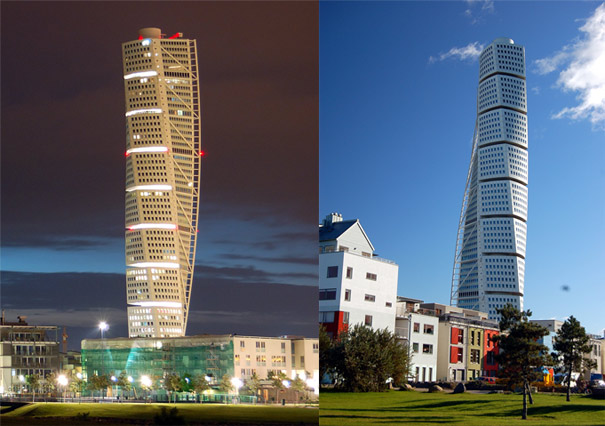
HSB Turning Torso is a skyscraper in Malmö, Sweden, located on the Swedish side of the Öresund strait. It was designed by the Spanish architect Santiago Calatrava and officially opened on 27 August 2005. The tower reaches a height of 190 metres (623 feet) with 54 stories. Upon completion, it was the tallest building in Scandinavia, the tallest residential building in the EU and the second tallest residential building in Europe, after the 264-metre (870 ft)-high Triumph-Palace in Moscow. A similar, taller skyscraper featuring the 90° twist is the Infinity Tower, currently under construction in Dubai, United Arab Emirates.
The 86-metre (280 ft)-high Kronprinsen was the tallest building in Malmö before Turning Torso.
The design is based on a sculpture by Calatrava called Twisting Torso. It uses nine segments of five-story pentagons that twist as it rises; the topmost segment is twisted ninety degrees clockwise with respect to the ground floor. Each floor consists of an irregular pentagonal shape rotating around the vertical core, which is supported by an exterior steel framework. The two bottom segments are intended as office space. Segments three to nine house 147 luxury apartments.
The Twisting Torso sculpture is a white marble piece based on the form of a twisting human being. Johnny Örbäck, former CEO of the Turning Torso contractor and Board Chairman of the Malmö branch of the co-operative housing association HSB, saw the sculpture in 1999 and contacted Calatrava to ask him to design a building using the same concept. Construction started in the summer of 2001.
One reason for the building of Turning Torso was to re-establish a recognizable skyline for Malmö since the removal of the Kockums Crane in 2002, which was located less than a kilometre from Turning Torso. The local politicians deemed it important for the inhabitants to have a symbol for Malmö — Kockumskranen, which was a large crane that had been used for shipbuilding and somewhat symbolised the city's blue collar roots.
As Turning Torso is a private residential building there is no access for the general public.
8. Edificio Mirador in Madrid, SpainThe 86-metre (280 ft)-high Kronprinsen was the tallest building in Malmö before Turning Torso.
The design is based on a sculpture by Calatrava called Twisting Torso. It uses nine segments of five-story pentagons that twist as it rises; the topmost segment is twisted ninety degrees clockwise with respect to the ground floor. Each floor consists of an irregular pentagonal shape rotating around the vertical core, which is supported by an exterior steel framework. The two bottom segments are intended as office space. Segments three to nine house 147 luxury apartments.
The Twisting Torso sculpture is a white marble piece based on the form of a twisting human being. Johnny Örbäck, former CEO of the Turning Torso contractor and Board Chairman of the Malmö branch of the co-operative housing association HSB, saw the sculpture in 1999 and contacted Calatrava to ask him to design a building using the same concept. Construction started in the summer of 2001.
One reason for the building of Turning Torso was to re-establish a recognizable skyline for Malmö since the removal of the Kockums Crane in 2002, which was located less than a kilometre from Turning Torso. The local politicians deemed it important for the inhabitants to have a symbol for Malmö — Kockumskranen, which was a large crane that had been used for shipbuilding and somewhat symbolised the city's blue collar roots.
As Turning Torso is a private residential building there is no access for the general public.
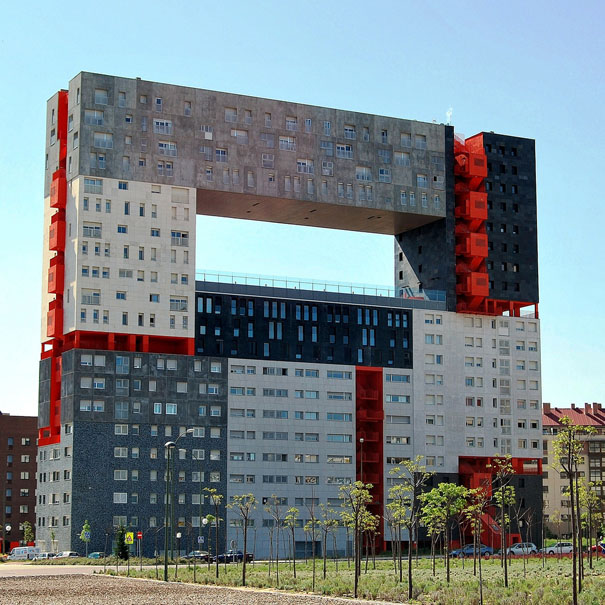
7. Habitat 67 in Montreal, Canada.
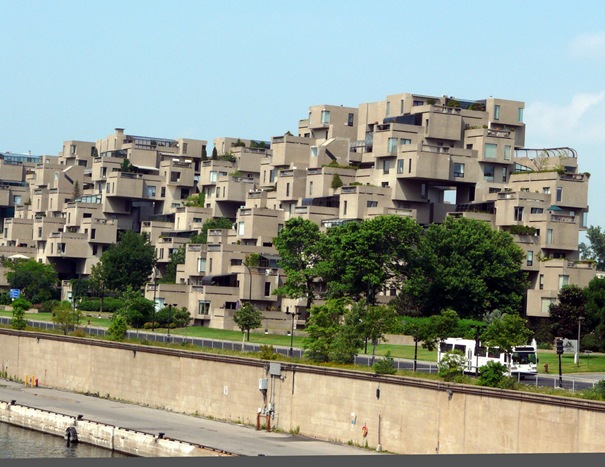
(Image credits: ken ratcliff)
Expo 67 was nicknamed "Man and his World", taken from Antoine de Saint Exupéry's memoir Terre des hommes, (literally "Land of Men"), translated as Wind, Sand and Stars. Housing was one of the main themes of Expo 67. Habitat 67 then became a thematic pavilion visited by thousands of visitors who came from around the world. During Expo 67 it was also the temporary residence of the many dignitaries coming to Montreal.It was designed to integrate the variety and diversity of scattered private homes with the economics and density of a modern apartment building. Modular, interlocking concrete forms define the space. The project was designed to create affordable housing with close but private quarters, each equipped with a garden. The building was believed to illustrate the new lifestyle people would live in increasingly crowded cities around the world.
The complex was originally meant to be vastly larger. Ironically, the building's units are now quite expensive rather than "affordable" due to its architectural cachet. It is owned by its tenants who formed a limited partnership that purchased the building from the Canada Mortgage and Housing Corporation in 1985.
6. Wonderworks in Pigeon Forge, TN, United States.

(Image credits: jkaty27)
WonderWorks began as a Top Secret facility on a remote island, in the middle of the Bermuda Triangle. As legend has it one experiment went awry, in an attempt to harness the power of a man-made tornado, the entire laboratory was hurtled skyward, hundreds of miles away, it landed upside down in the heart of Pigeon Forge TN. When you enter the building, everything will be upside down, so in order to participate in the fun, you must be inverted. Once you're properly aligned for your adventure, Family Fun awaits with more than 120 interactive, hands-on exhibits. As the Building hurtled skyward it encountered what can only be described as a time portal.Late in the 1900's a traveling Troop the Hoot N'Holler Players and their Cook Scraps were on a steamer ship headed for Europe and their big break. The Ill fated Steamer chose a course thru the Bermuda triangle where it disappeared and was never heard from again.
As the Building Emerged from the time portal, it had 5 new occupants, that's right Scrapps and the Hoot N' Holler players are here for you. Their mission, each night is to entertain you and your family and create memories that will last a life time. As you attend the Funniest Dinner Show in the Smoky Mountains you will enjoy a Hilarious evening of Fun. The cast sings & dances and Scraps tries to make his way into the show each night.
5. Museum of Contemporary Art in Niteroi, Rio de Janeiro, Brazil.
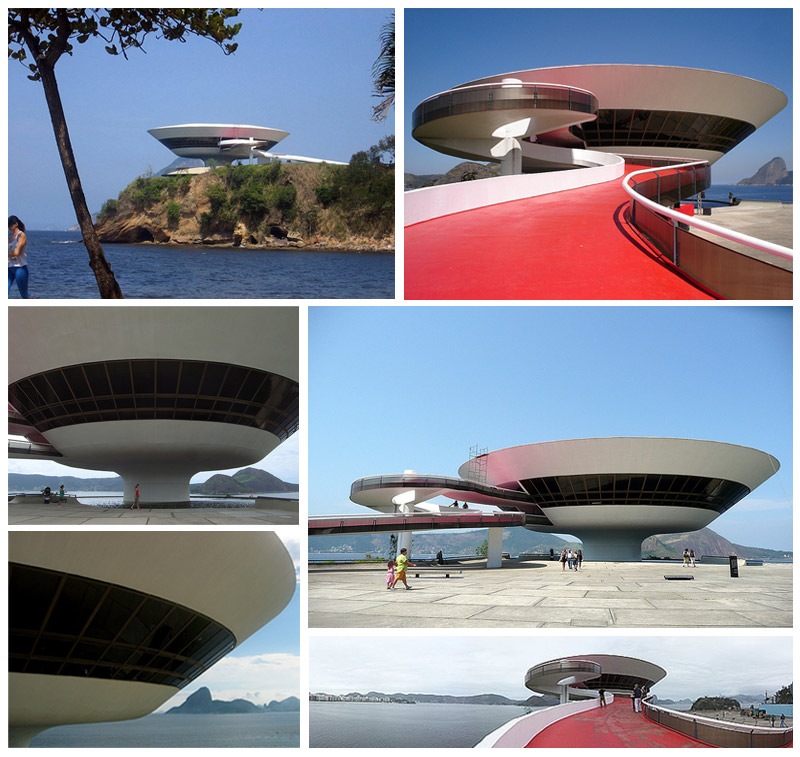
Designed by Oscar Niemeyer with the assistance of structural engineer Bruno Contarini, who had worked with Niemeyer on earlier projects, the MAC-Niterói is 16 meters high; its cupola has a diameter of 50 meters with three floors. The museum projects itself over Boa Viagem (“Bon Voyage,” “Good Journey”), the 817-square meter reflecting pool that surrounds the cylindrical base “like a flower,” in the words of Niemeyer.
A wide access slope leads to a Hall of Expositions, which has a capacity for sixty people. Two doors lead to the viewing gallery, through which can be seen the Guanabara Bay, Rio de Janeiro, and Sugarloaf Mountain. The saucer-shaped modernist structure, which has been likened to a UFO, is set on a cliffside, at the bottom of which is a beach. In the film Oscar Niemeyer, an architect committed to his century (Marc Henri Wajnberg, 2000), Niemeyer is seen flying over Rio de Janeiro in a UFO, which then lands on the site, suggesting this as the origin of the museum.
5. Angkor Wat in Cambodia.
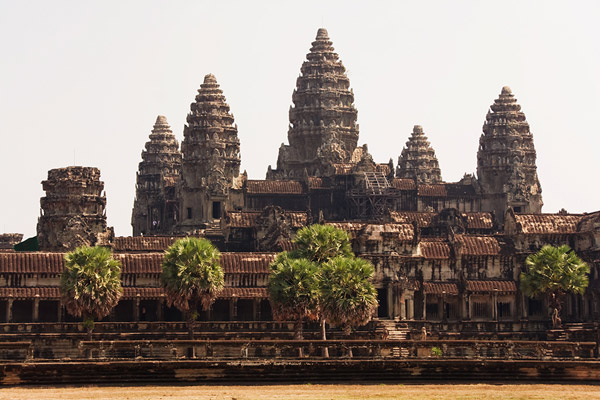
(Image credits: `◄ccdoh1►)
Angkor Wat (or Angkor Vat), is a temple complex at Angkor, Cambodia, built for the king Suryavarman II in the early 12th century as his state temple and capital city. As the best-preserved temple at the site, it is the only one to have remained a significant religious centre since its foundation—first Hindu, dedicated to Vishnu, then Buddhist. The temple is the epitome of the high classical style of Khmer architecture. It has become a symbol of Cambodia, appearing on its national flag, and it is the country's prime attraction for visitors.Angkor Wat combines two basic plans of Khmer temple architecture: the temple mountain and the later galleried temple, based on early South Indian architecture, with key features such as the Jagati. It is designed to represent Mount Meru, home of the devas in Hindu mythology: within a moat and an outer wall 3.6 kilometres (2.2 mi) long are three rectangular galleries, each raised above the next. At the centre of the temple stands a quincunx of towers. Unlike most Angkorian temples, Angkor Wat is oriented to the west; scholars are divided as to the significance of this. The temple is admired for the grandeur and harmony of the architecture, its extensive bas-reliefs and for the numerous devatas (guardian spirits) adorning its walls.
The modern name, Angkor Wat, in use by the 16th century, means "City Temple": Angkor is a vernacular form of the word nokor which comes from the Sanskrit word nagara (capital), while wat is the Khmer word for temple. Prior to this time the temple was known as Preah Pisnulok, after the posthumous title of its founder, Suryavarman II.
4. Atomium in Brussels, Belgium
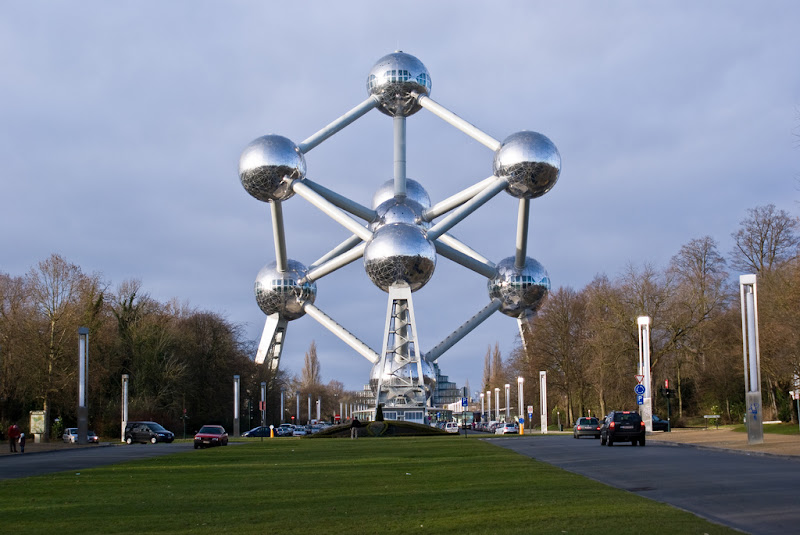
(Image credits: /*dave*/)
The Atomium is a monument built for Expo '58, the 1958 Brussels World's Fair. Designed by André Waterkeyn, it is 102-metres (335 ft) tall, with nine steel spheres connected so that the whole forms the shape of a unit cell of an iron crystal magnified 165 billion times.Tubes which connect the spheres along the 12 edges of the cube and all eight vertices to the centre enclose escalators connecting the spheres which contain exhibit halls and other public spaces. The top sphere provides a panoramic view of Brussels. Each sphere is 18 metres in diameter. Three spheres are currently (2008) closed to the visitors, others are easily reachable with escalator. The vertical vertex contains a lift which was considered very fast and advanced at the time of building (the speed is 5 m/s).
3. Kansas City Library in Missouri, USA.
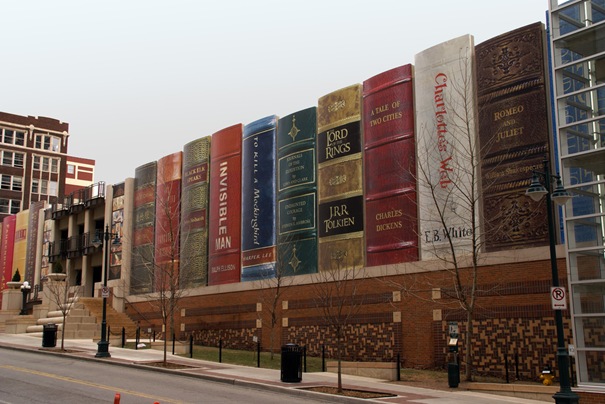
(Image credits: jonathan_moreau)
2. The Crooked House in Sopot, Poland.
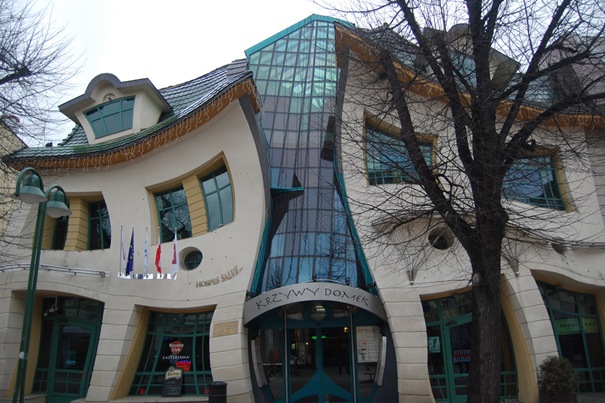
(Image credits: brocha)
1. Sam Kee Building
(six feet deep, world's thinnest in Canada)
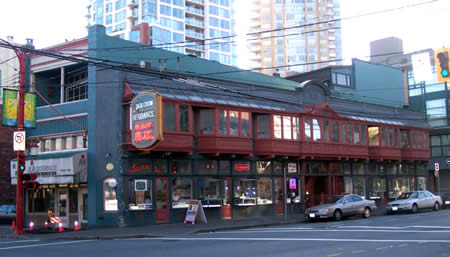
This building was home to 13 businesses at one time. It was the only place in Chinatown for residents to enjoy hot baths. There is a tunnel beneath the building that was used as an escape route from raids on Opium dens situated on neighbouring Shanghai Alley. The building is also fronted by the only remaining glass sidewalk in Chinatown. As part of the ongoing history of this structure, issues still arise between the owners and the city with respect to encroachment and overhangs. In spite of each side having an element of right it seems to boil down to the proverbial "tit for tat". It makes for an interesting study in civics.
SOON....
Rotating Tower in Dubai, UAE (scheduled on 2010)
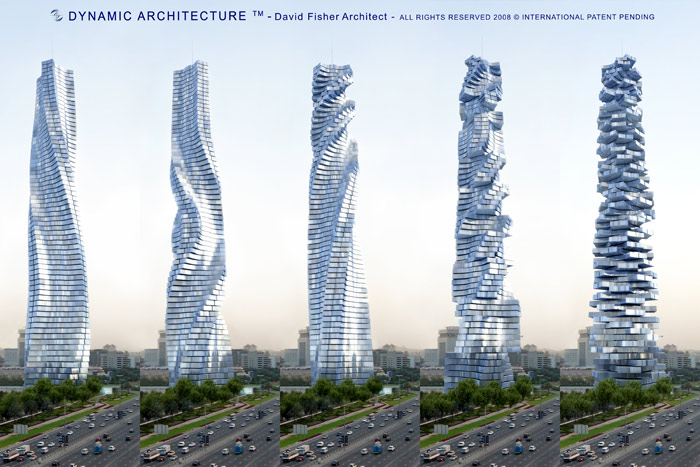
(Image: Dynamic Architecture ™ all rights reserved to Dr. David Fisher)
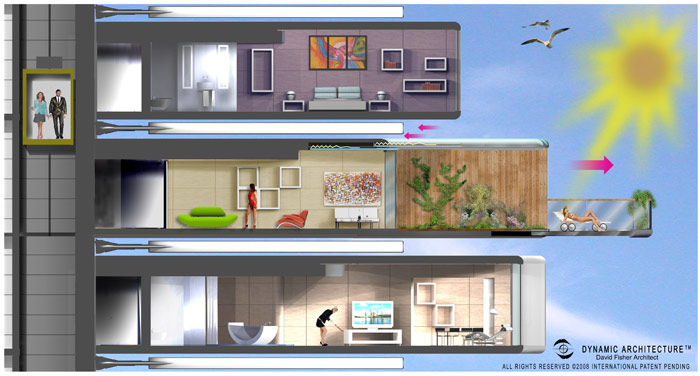
(Image: Dynamic Architecture ™ all rights reserved to Dr. David Fisher)
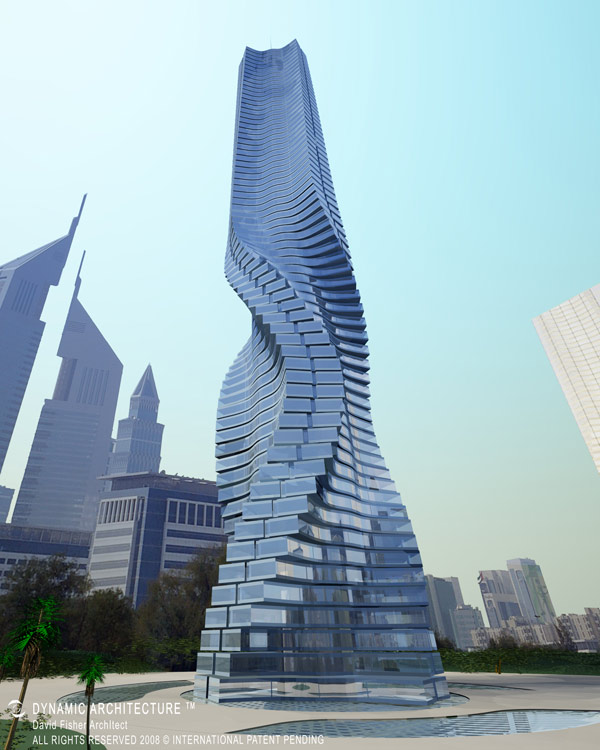
(Image: Dynamic Architecture ™ all rights reserved to Dr. David Fisher)
Location: Dubai, United Arab EmiratesDate: scheduled on 2010
Architect: Dr. David Fisher
Purpose: multipurpose (offices, hotel, residential apartments)
More info: We have seen tall buildings, we have seen strange buildings, but have you seen buildings in motion that actually change their shape? Sounds unbelievable but not to Dr. David Fisher.
Visionary architect Dr. David Fisher is the creator of the world’s first building in motion - the revolutionary Dynamic Tower. It will adjust itself to the sun, wind, weather and views by rotating each floor separately.
This building will never appear exactly the same twice.
It is amazing but you will have the choice of waking up to sunrise in your bedroom and enjoying sunsets over the ocean at dinner.
In addition to being such an incredible engineering miracle it will produce energy for itself and even for other buildings because it will have wind turbines fitted between each rotating floor (picture 2). So an 80-story building will have up to 79 wind turbines, making it a true green power plant.
The Dynamic Tower in Dubai will be 1,380 feet (420 meters) tall, 80 floors, apartments will range in size from 1,330 square feet (124 square meters), to Villas of 12,900 square feet (1,200 square meters) complete with a parking space inside the apartment. It will consist of offices, a luxury hotel, residential apartments, and the top 10 floors will be for luxury villas located in a prime location in Dubai.
The Dynamic Tower in Dubai will be the first skyscraper to be entirely constructed in a factory from prefabricated parts. So instead of some 2000 workers, only 680 will be sufficient. Construction is scheduled to be completed by 2010.
Website: http://www.dynamicarchitecture.net



2 comments:
It's really beautiful, even here in Doha, it seems that there is a global race to build skyscrapers with an amazing or odd architectural designs.
Great post my friend.
can't wait to see the rotating tower! hehehe
Post a Comment